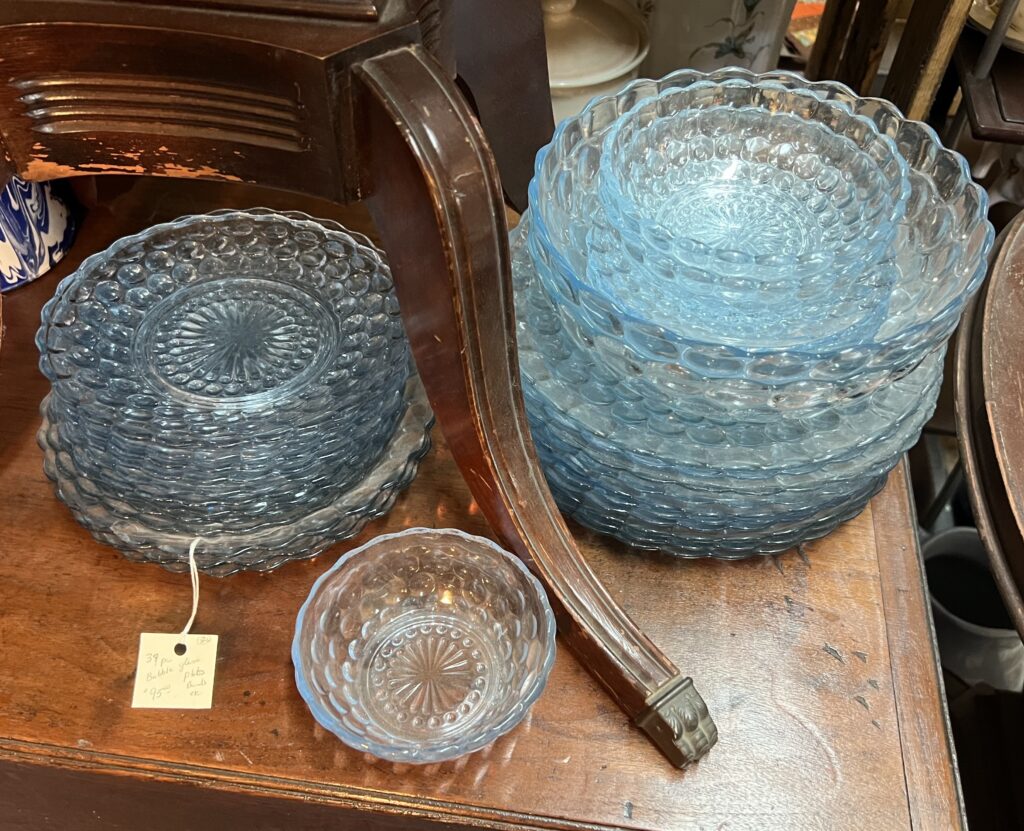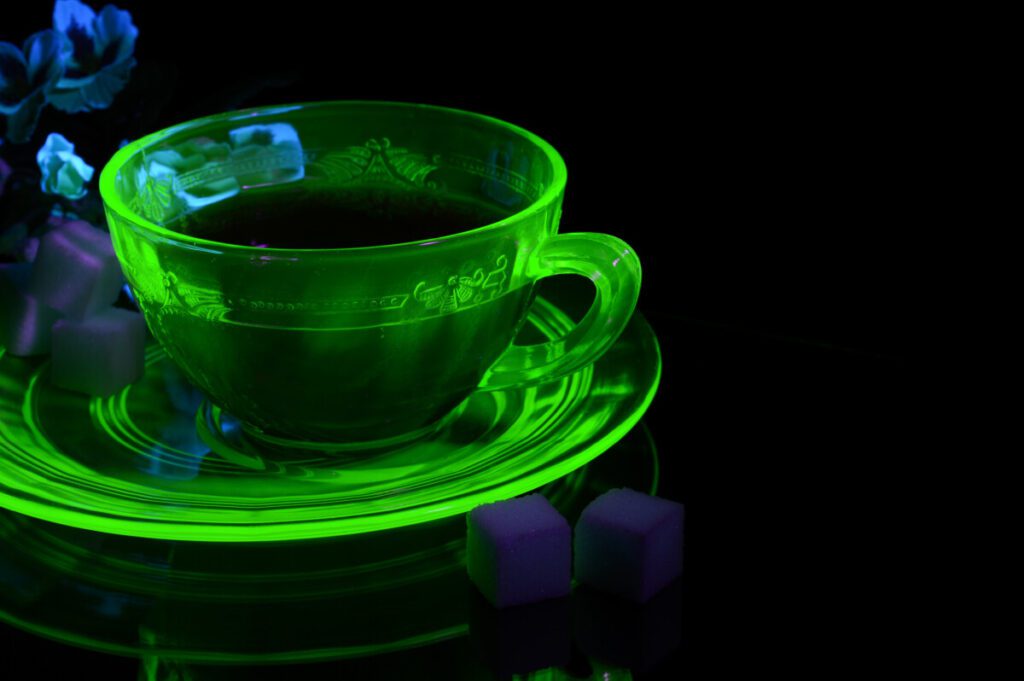Depression glass has become a desirable collectible item over the years. This colorful and eclectic glass is very pretty to look at but there is some skepticism about whether it is safe to use.
Most depression glass is not safe to eat or drink off. The U.S. Environmental Protection Agency recommends against using these types of dishes for their original purposes due to the amount of uranium found in them. However, Depression Glass is still safe to collect and use for decoration.
Depression glass has a rich history and is pleasing to look at. However, the composition and ingredients of this glass can lead to safety and health hazards.

Is there Uranium in Depression Glass?
Depression glass was made in many colors. Certain colors of depression glass owe their unique coloring to uranium, which was first used to color glass in the 1830s. Near the end of World War II, Uranium glass fell out of production in the U.S. when uranium was restricted to nuclear-weapons development. Because of this, Depression glass has become a collectible piece that people will pay good amounts of money for.
See also: How to tell the difference between depression glass and uranium glass.
There is only a small amount of uranium in Depression glass. Because of this minuscule amount, some depression glass collectors argue that this glass is safe to eat off of. However, it is recommended by health professionals that you do not consume food off of these dishes.
The U.S. Environmental Protection Agency (EPA) warns of the potential dangers of consuming Uranium. It is better to air on the side of caution. When ingested, Uranium can be extremely harmful to your lungs, in extreme cases its consumption can lead to lung cancer.
Uranium is a radioactive material. It contains low-level amounts of background radiation. In the 1930s, when Depression glass was created, scientists didn’t fully understand the dangers of uranium and radioactive materials. Even in small doses, they have the potential to be harmful.
Arsenic
Some pieces of Depression glass have been found containing traces of Arsenic. This is rare but incredibly dangerous, even in small amounts. Depression glass’s ingredient list is questionable. Safety and health are not guaranteed when it comes to antiques.
The production of this glass took place when healthy standards were lower and knowledge was limited. There is a reason Uranium is restricted when producing glass. Restricting uranium use in the United States was a precaution taken by professionals to improve people’s health.
The most reliable way to identify the presence of uranium in glass is to expose it to a source of ultraviolet light, such as a black light, and examine it in the dark. The uranium will make the glass glow a rich green color.
This unique ability to glow is one of the reasons collectors have such a fascination with Depression glass. The glowing of the glass would not be possible without uranium. This cool, green glow makes these glass pieces the perfect decoration, especially around Halloween.

Caring for Depression Glass
Depression glass is vintage. In order to preserve the history of Depression glass and keep the dishes in good condition, they require proper care. You should not put your Depression glass in the microwave. This glass was made before the invention of the microwave so the glass was not made to withstand the radiation of a microwave. You should not put these dishes in the oven or on the stovetop either. They are likely to explode.
Do not wash the vintage glass in the dishwasher. Depression glass is fragile and with age, it only gets more susceptible to breakage. Hand wash depression glass and make sure to store it somewhere dry and stable. Hand washing will limit the wearing down of your dishes and help preserve them.
Be aware of the condition of your depression glass. With time, some glass can show signs of deterioration such as cracking or pitting of the glaze. This can be dangerous. These are signs that the glaze is disintegrating and could allow lead to leach into the food. If you do choose to eat off of your Depression glass it is even more important that you watch for these signs.
The best way to safely use depression glass is to use it purely for decoration and collection. When being displayed on a shelf, this glass is completely safe. Many avid collectors will display their Depression glass with glass cabinets that have blacklights shining onto the glass. This showcases the dish’s ability to glow. Displaying the glass also allows the glass to last longer and for history to be preserved for longer.
History of Depression Glass
Depression glass is a type of dinnerware that was mass-produced in the 1920s and 1930s. It was produced in the Depression Era which is how it got its name. It is made in a variety of colors and many times has intricate designs etched into it. Today, people love to collect it. It has a lot of appeal as a collectible item because of its role in the typical World War II household. It is a timeless piece of decor and is a great way to preserve history.
The prices of depression glass have also increased as these dishes have gained popularity. At the initial time of its production, a cup made of depression glass would sell for around 5 dollars. Today, a rare piece of depression glass can sell for anything from 100-500 dollars.
The most dedicated Depression glass collectors will scour through thrift stores and look for hidden gems. Thrifts stores are great places to find depression glass because many people donate their grandparent’s dishware without realizing the value of it.
If you are lucky enough to find Depression glass at a second-hand store, you will save money and typically end up paying prices similar to the prices in the 1930s. This will leave a good margin to sell it somewhere else for even more.

